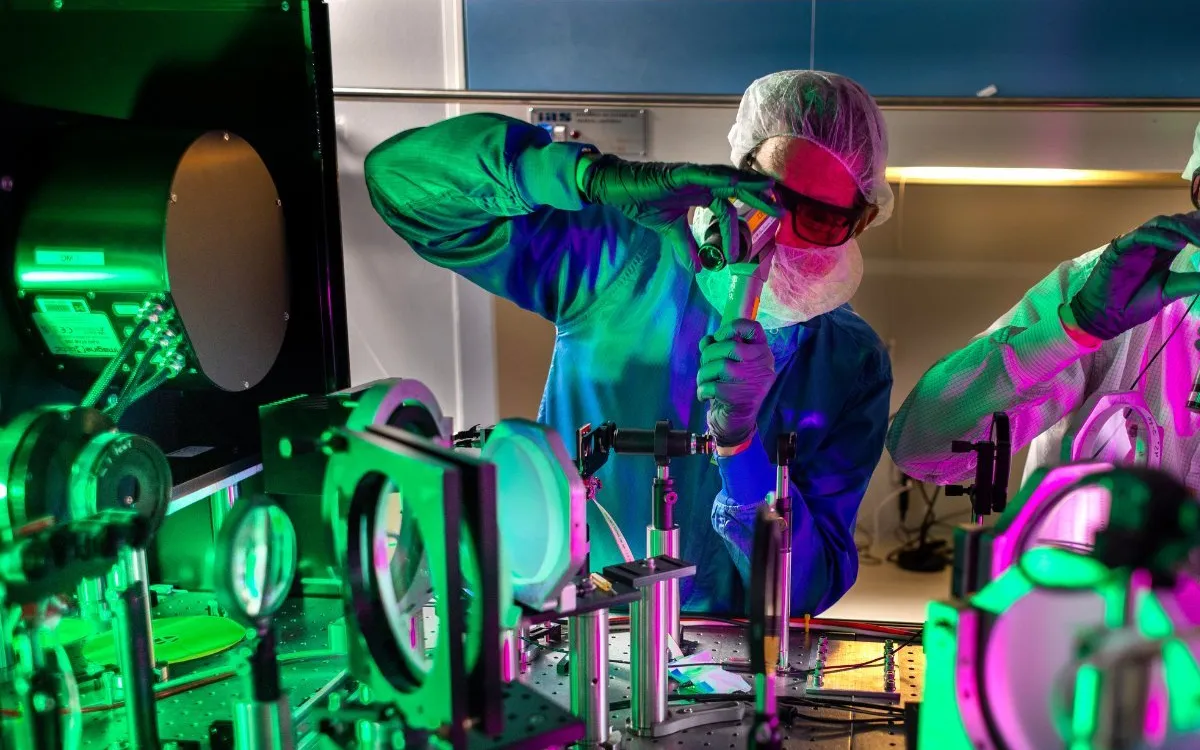
The ZEUS laser, a remarkable technological marvel located at the University of Michigan, has recently achieved a groundbreaking milestone by generating a pulse that establishes it as the most powerful laser beam in the United States. This state-of-the-art laser peaked at a stunning 2 petawatts, equivalent to an astonishing 2 quadrillion watts, which is approximately 100 times the entire planet's power output. However, this immense energy is ephemeral; the pulse lasts merely 25 quintillionths of a second, providing just enough time for researchers to conduct revolutionary scientific experiments.
“This milestone marks the beginning of experiments that move into unexplored territory for American high field science,” stated Karl Krushelnick, director of the Gérard Mourou Center for Ultrafast Optical Science, where ZEUS is housed, in a recent Michigan news release. The acronym ZEUS stands for Zettawatt Equivalent Ultrashort laser pulse System, and its power is often humorously compared to that of the Greek god Zeus, who is famously known for wielding a lightning bolt as a symbol of his might.
ZEUS is funded by the National Science Foundation (NSF), allowing scientists worldwide to apply for the opportunity to conduct experiments there. This initiative is akin to the Linac Coherent Light Source II (LCLS-II) at the SLAC National Accelerator Laboratory. While LCLS-II is used for a variety of research, including understanding photosynthesis and examining the cores of stars, ZEUS offers an expansive range of applications that include plasma physics, quantum physics, medical imaging, particle acceleration, and materials research.
According to Krushelnick, the individual photons produced by LCLS have an energy that is approximately 20,000 times greater than those from the ZEUS laser, yet the peak power of LCLS is 100,000 times lower. This stark contrast highlights ZEUS's unique capabilities. The laser aims to facilitate various groundbreaking scientific endeavors, including measuring physics at extreme intensities, developing new radiation sources, engaging in laboratory astrophysics, and imaging small-scale materials.
Franklin Dollar, a physicist at UC Irvine, is set to conduct the first 2-petawatt user experiment, which focuses on generating electron beams with energies that could rival those produced by extensive particle accelerators. If successful, his team anticipates achieving electron beam energies that are between 5 and 10 times higher than any previously recorded with ZEUS. The laser's innovative approach utilizes wakefield acceleration, a method in which electrons effectively "surf" on plasma, accelerating to remarkably high speeds.
“The quest for higher peak power lasers enables studies of the fundamental nature of light in the limit of extremely high instantaneous electromagnetic fields,” explained Vyacheslav Lukin, program director in the NSF Division of Physics, overseeing the ZEUS project. He elaborated that, much like ocean waves that begin to break and foam when they reach significant heights, electromagnetic waves behave differently under intense light and strong electromagnetic fields.
Not only is the ZEUS laser beam powerful, but it is also quite substantial in size. At its widest, the laser pulse measures approximately one foot (0.3 meters) across and several feet in length. However, to maximize the number of laser pulses available for experimentation, the pulse is ultimately focused down to just 0.8 microns wide.
Exciting developments are on the horizon, as later this year, the facility is set to receive a titanium-infused sapphire crystal that will elevate the laser's power to an impressive three petawatts. This crystal, which took nearly five years to manufacture, measures about 7 inches (0.18 m) across. In these upcoming experiments, ZEUS’s electrons will collide with laser pulses from the opposite direction, effectively pushing the pulse to a zettawatt-scale in relation to the particle beam.
Having already conducted around 15 months of user experiments with its single petawatt laser, ZEUS is now poised to explore much more powerful energy pulses. With the enhanced capabilities of the new laser, the scientific community anticipates significant advancements in probing the universe's most fundamental physics, yielding implications across multiple fields of science.